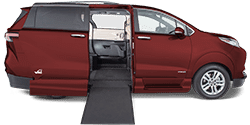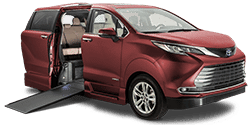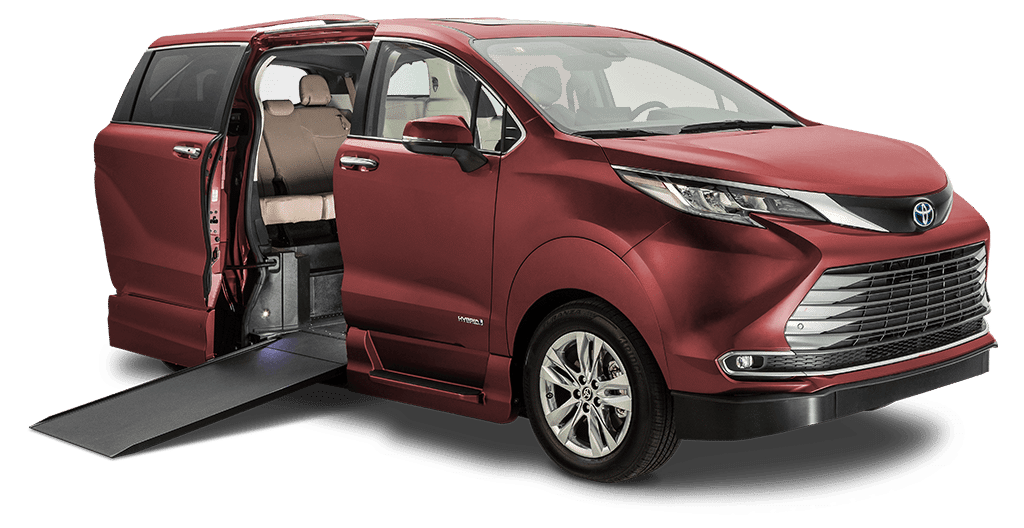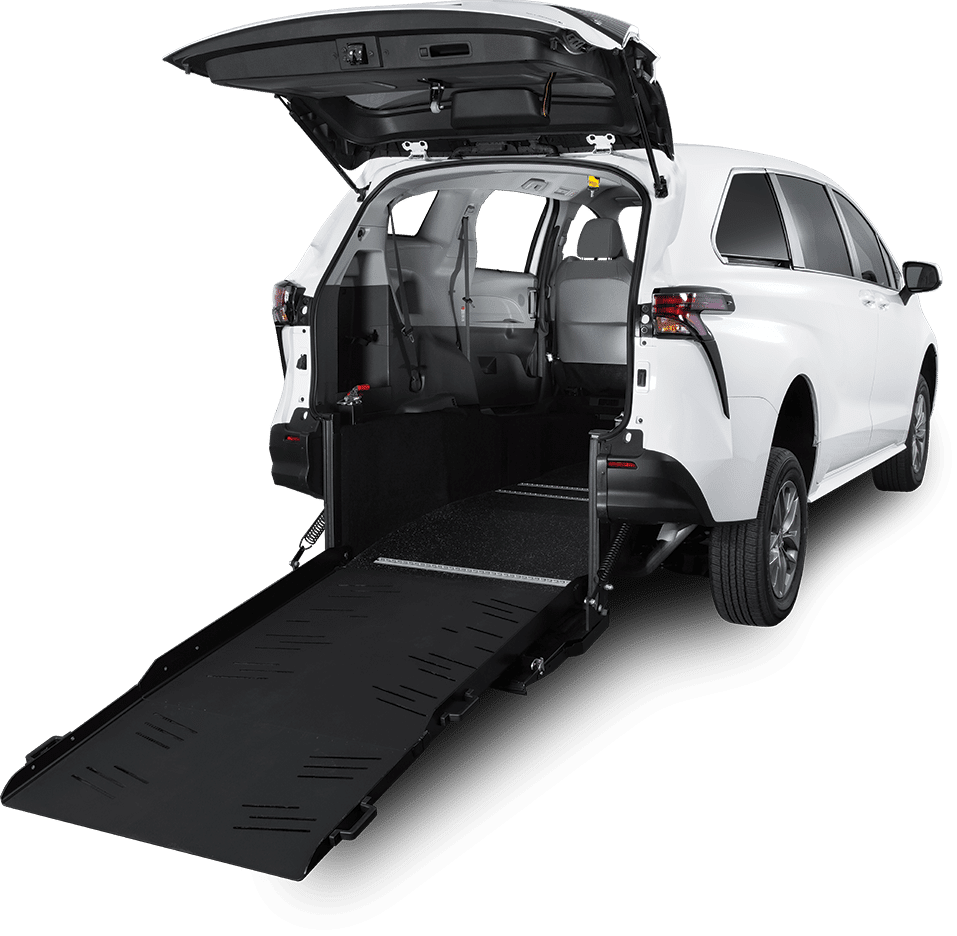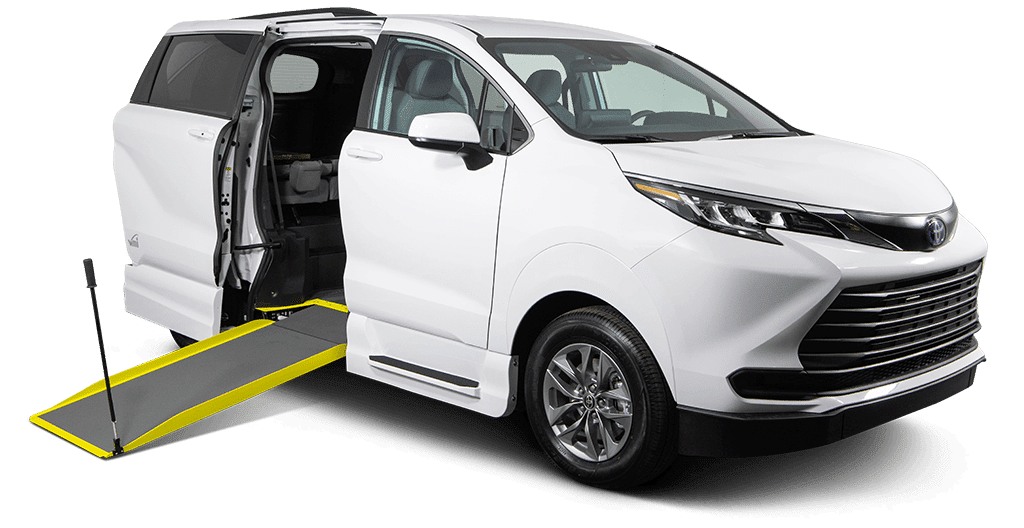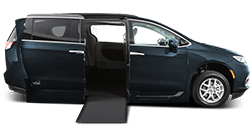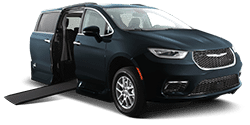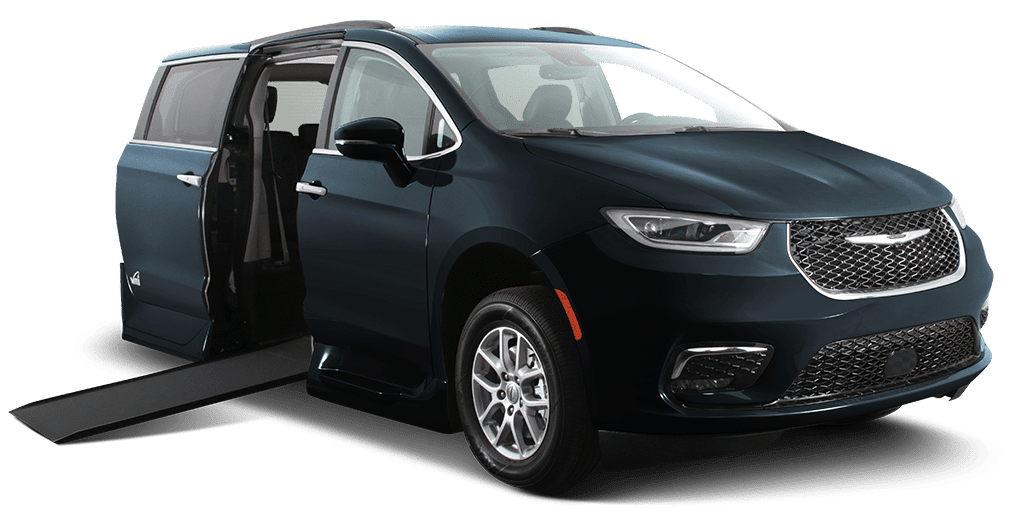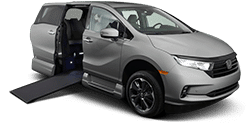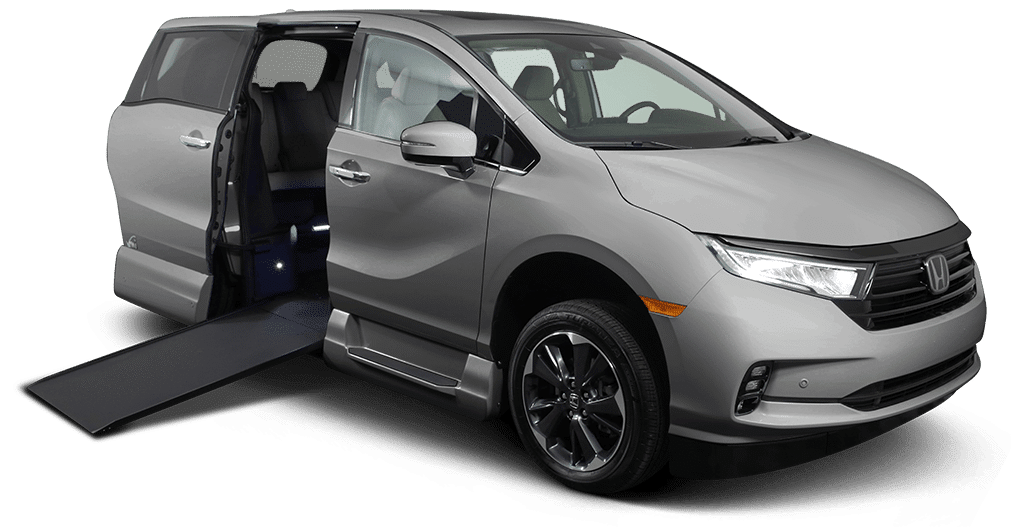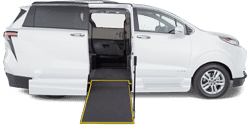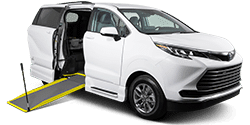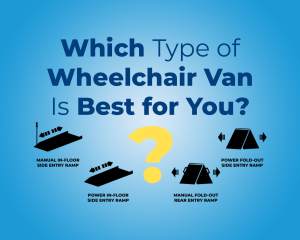The winter months bring holidays, cheer, family get-togethers, and, of course, snow. Driving in the snow brings a new set of challenges to driving on the road. However, with proper preparation, wheelchair van drivers can minimize their risks by taking some simple actions. Here are some preparation tips for driving on slippery winter roads:
Snow Tires at the Ready
If a trip is urgent, or if snow is common where you live, consider investing in snow tires. Snow tires that have tread patterns and rubber compounds specially designed for optimum traction on slick roads.
When shopping, look for the symbol that looks like a snowflake on a mountain. It should be on the sidewall. This symbol indicates the tire meets a tire-industry standard for snow traction. These types of tires grip the snow much better than regular tires, ensuring safer travel with less slipping.
If you opt for winter tires, be sure to get a full set or stick with all-season tires. Mounting only two winter tires on the front or back of a car will make it prone to spinning out or plowing straight off the road. This is well worth it for the duration of the car’s lifespan, especially in northern parts of the U.S.
Know Your Snow
No single vehicle tire handles every type of winter weather. Here’s how to deal with snow, slush, and everything in between:
Deep, packed snow. This is where winter/snow tires shine. They’re engineered to provide optimum traction here, with rubber that stays soft and pliable in bitter temperatures (which improves grip). These tires also have slits that act as biting edges to help maintain control.
Slick, icy roads. Stud-able and studless winter/snow tires work well here. Stud-able ones have holes in the tread to hold metal studs; the studs claw the ice, improving grip. Studless tires have rubber that has been formulated to enhance grip on snow and ice, and therefore don’t need studs. They work like a squeegee on ice; you can actually hear that sound when you stop.
Melted snow and dry pavement. In these conditions winter/snow tires generally do not grip as well as all-season tires, and their tread wears faster. You’ll want to swap them for your regular tires when spring rolls around.
Wait for Snow to Melt
With snow comes slippery roads. It’s best to wait until the snow has at least subsided completely before going anywhere. Going out later in the day or even the next day gives the snow time to melt or for roads to be cleared. Snowplows and sanding crews will work tirelessly to ensure roads are safe for driving.
Snow Tires for Your Wheelchair Too
While you’re at it, consider getting wheelchair tires that are ready for snow too. If in a pinch, take the DIY approach. If you can find them with a good fit for your wheelchair, mountain bike tires can work well for wheelchairs, as long as they have reliable, deep tread.
Also consider using zip ties that are long enough to go around the thickness of your wheelchair tires. Wrap the ties around your wheelchair tires every couple of inches until you’ve covered the circumference of the tire. This will help to give your tires more traction.
Clear the Driveway
Be a little more careful when entering a wheelchair vehicle. Unless your vehicle’s in a garage, the path to the entry point can be pretty slippery. Proper preparation will ensure a safe travel path — ensure that pathways are clear of snow. Whether it’s shovelled to the side or salted down, ensuring snow is out of the way will help wonders. If you do notice any ice or puddles of standing water, take extra care when maneuvering around or through these. Also, attempting to drive your wheelchair through the snow can be physically taxing. Ask for additional help to avoid accidental over-exertion.
Prep the Vehicle for Cold Weather
Before anything happens, there are a few steps you can take to prepare for snowy weather. When November hits, make sure your wheelchair van is properly stocked with the following essentials: extra blankets, vehicle cell phone charger, an umbrella or poncho, and an emergency flashlight. All of these items will be useful for heavy snowfall you aren’t expecting or even a light dusting.
Go Out with a Friend
Bringing a buddy along not only makes the trip more fun, but another set of eyes will help. If that’s not possible, make sure to give a friend, neighbor, or family member sufficient details of your trip, in case any problems should arise with the weather. Tell them where you’re going, why you’re going, when you’re leaving and expected back, and who will be with you. Double checking to ensure they have your cell phone number in case they need to contact you is also important.
Maintain your Wheelchair Vehicle
It’s important for your vehicle to be performing at its best on the road, snow or shine. Locate your nearest VMI Select Dealer or any mobility equipment dealer in your area who can perform an inspection of your wheelchair van. They often have specific recommendations of how to ensure your wheelchair van is ready for winter driving conditions in your unique area. Be sure to also have your van inspected for overall winter readiness before December begins. Check windshield wipers and fluid, battery strength, and make sure to get an oil change.
Register with your Local Special Needs Registry
Whether it’s snowing or not, it’s important to be in contact with a Special Needs Registry. Registration helps emergency response teams to be better prepared to help in the event of an emergency. County officials will have your contact information in their database and will be able to locate you more quickly and easily if needed with all the tools to assist with your needs. This can be done through your county.
With preparation, driving a wheelchair vehicle in the snow can almost as safe as normal driving conditions. Be safe this winter!

